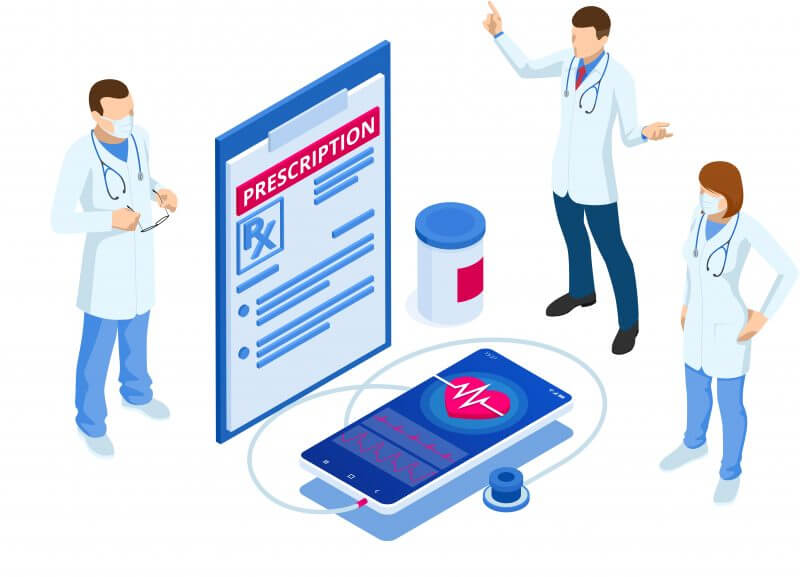The Need for Good UX in the Healthcare Sector

The healthcare industry is nearly 10 years behind other industries when it comes to the sophistication of their information systems. Although we often assume that the healthcare industry is a site of constant new technological innovations and advancements, the reality is that implementing and testing out new technologies and systems is rather tricky, as we have the health of patients and the valuable time of doctors on the line.
How Bad UX Contributes to Clinical Burnout
Hospitals in the U.S. are becoming increasingly digitized, with over 90% of medical institutions having their health information computerized within the past decade, a move that is meant to help doctors work more effectively and efficiently. However, each new implemented system of electronic medical records that is meant to make the lives of health care practitioners easier often does the opposite, increasing their time in front of the computer and contributing to burnout. These claims are backed up by research, with a 2016 study published in the Annals of Internal Medicine finding that for every hour that a physician spends with a patient, they spend two in front of the computer, combined with an extra 1-2 hours doing additional electronic health records or other desk work after hours.
A different study performed by the university of Wisconsin found that family physicians worked 11.5 hour days on average, compared to the 8.8 hour workdays of the average american worker.
These long hours combined with inefficient information systems has contributed to the epidemic of physician burnout, with 55% of U.S. doctors reporting symptoms of depression, exhaustion, and sense of failure. Medical errors are the third leading cause of death in america, and physician burnout are just as responsible for such errors as unsafe workplace environment. Yet even in workplace conditions that are deemed as extremely safe, medical errors within the unit tripled if working physicians reported high levels of burnout.
Doctors are required to input large volumes of data entry in electronic health records, and a study done by leading clinical institutions in collaboration with the American Medical Association have found that the poor usability of electronic health records is one of the primary causes of physician burnout. The study also found that physician burnout lessened as EHRs usability improved. Thus, from this study we can see the detrimental effects of poor ux design on the healthcare system as a whole.
In response to the high rates of burnout among physicians, the American Medical Association has outlined eight priorities for improving the usability of EHRs
- Enhance physicians’ ability to provide high-quality patient care
- Lessen cognitive workload
- Support team-based care
- Encourage care coordination
- Facilitate digital and mobile patient engagement
- Expedite user input into product design and post-implementation feedback
- Offer product modularity and configurability
- Promote data liquidity
How UX can help
Healthcare professionals are forced to use information systems daily, many of which are outdated, complex, and inefficient. User experience design works on ensuring that the systems users interact with are efficient and help them complete their tasks while using as little steps as possible.
The information systems that are incorporated into the healthcare industry differ greatly from other industries, mainly due to the numerous governmental regulations and information requirements of insurance companies that healthcare professionals must navigate.
Focusing on user experience can help eliminate physician burnout by improving system workflows. By focusing on the end-user (the physician), healthcare systems, and electronic health record workflows can be better adapted to meet the needs of physicians. Further, through the streamlining of needed documents, physicians will enjoy reduced volumes of data entry
The Design Thinking Framework
UX design processes prioritize the end-user and work to make the interactions of users simple and meaningful. The framework has five major components:
- Learn: first, designers work to observe and interview the target users in order to understand their needs and problem areas. By empathizing with the user, designers can ensure that their designs work towards solving the problems users face when interacting with interfaces. The deliverables in this phase include personas, usage scenarios, journey maps, and task flow analysis
- Define: this step works to articulate the problems users have based on the data collected in the learning phase. Here, designers work closely with stakeholders to define the requirements of a new interface or system. The deliverables in this phase include storyboards, workflows, and usage scenarios.
- Ideate: this phase looks to generate feedback from end users on the potential design solutions that can be implemented and whether or not these solutions will meet the needs of users. This process will take place via wireframing and formative testing. The deliverables in this phase include information architecture, concept designs, wireframes, and usability reports
- Build: This phase takes the feedback generated in the previous phase to figure out the best solution and begin building a prototype, one that will be tested with users prior to coding. The deliverables in this phase include user validated products
- Iterate: Here, designers continue to seek feedback throughout the design cycle to ensure that every step of the design is meeting the needs of users. This step can be repeated multiple times.
Voice Assistants
Voice assistants have been gaining momentum in the public community, with nearly half of all Americans reporting using this feature that is built into nearly all smartphones, according to a 2017 report by the Pew Research Center. Voice assistants have also been widely used in the healthcare industry, with physicians using dictation software in order to transcribe medical notes. Research found that the time-saving and hands-free features of voice assistants were well-liked by physicians, especially because physicians could use these devices during sterile procedures without having to remove their gloves. Replacing traditional interfaces with voice-driven user interfaces instead could help reduce physician burnout by reducing the amount of time they have to sit and manually enter data.